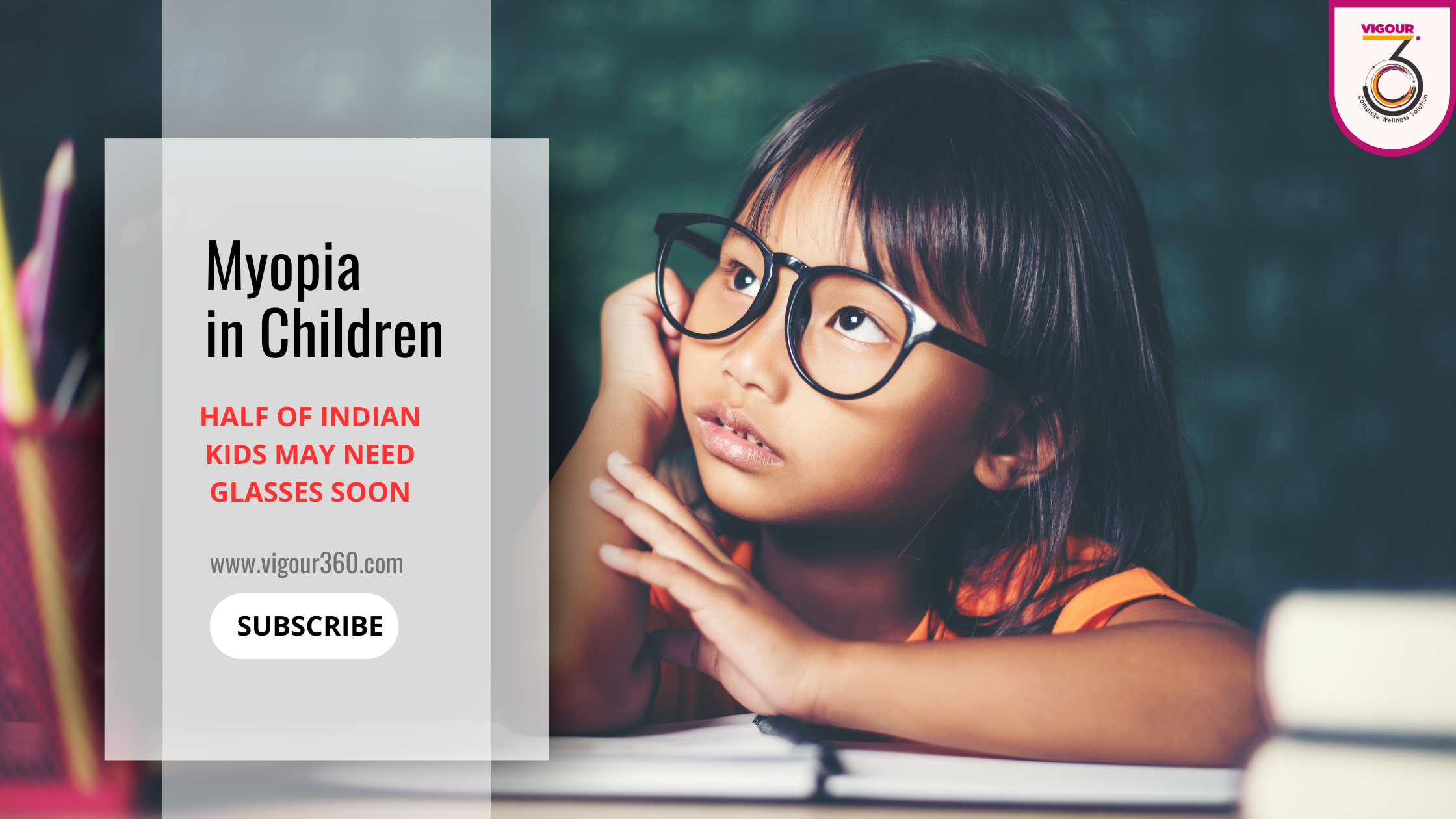
In India, one in four children has Myopia. Screen time or closely working on gadgets significantly contributes to increasing rates of myopia in children. Parents and schools have a vital role in curbing this escalating issue in children.
Myopia starts in childhood or adolescence and progresses further; therefore, myopia control in children is key to avoiding complications in vision. Preventive screening is the first step to detect vision problems like myopia and helps to slow down the progression. Let's understand Myopia in detail.
Myopia is a vision condition where far objects look blurry, whereas near object looks clear. Myopia happens when the eye’s shape is a little off, causing light to bend the wrong way. Instead of the light focusing exactly on the retina (the part at the back of the eye that helps us see), it stops in front of it. This makes faraway objects look blurry.
High myopia means a child has a very strong level of nearsightedness. Their eyesight is much blurrier than regular myopia, and they need higher-powered glasses to see clearly. Children with high myopia need regular eye checkups because their eyes are more at risk for future eye problems like retinal issues.
Progressive myopia means a child’s nearsightedness keeps getting worse over time. Their eye power increases every few months or every year because the eye continues to grow longer. This is more common today due to more screen time and less outdoor play. Early control and regular monitoring can help slow down this worsening.
These are the behaviors you may see in your child that suggest they might have myopia:
These signs indicate the child is struggling to see distant things clearly.
Myopia (nearsightedness) happens when the eyeball grows longer than it should or the front part of the eye (cornea) is too curved. Because of this, light doesn’t focus correctly on the retina, making faraway objects look blurry.
Though Genetics plays its role, environmental factors such as too much screen time, lack of outdoor play, and long hours of close-up work can contribute to cause Myopia.
To slow down myopia progression in children, parents should encourage balanced visual habits—like following the 20-20-20 rule, limiting screen time, and ensuring proper lighting while reading. One of the most effective, research-backed strategies is increasing outdoor time, as outdoor activity reduces the prevalence of myopia in children by exposing their eyes to natural light and allowing them to focus on distant objects.
Preventive screening helps detect early signs of myopia before a child starts struggling with vision. Regular eye checkups allow doctors to track changes and control myopia progression at the right time.
With early detection, parents can take timely steps—like lifestyle changes and treatment—to protect their child’s vision for the future.
Myopia control in children focuses on slowing down how quickly nearsightedness worsens. Since myopia in young children often progresses faster due to rapid eye growth, early detection and regular eye checkups are essential. Addressing the condition early helps protect long-term vision and reduces risk of severe eye problems later in life.
Vigour360 helps children by identifying refractive errors early through advanced, child-friendly eye screening. By catching vision issues before they affect learning, we support better academic performance and classroom confidence. Our preventive approach ensures timely guidance, treatment pathways, and regular monitoring. With Vigour360, every child gets the clarity they need to learn, grow, and thrive—both academically and in everyday life. Connect now!
No, myopia cannot be reversed because the eye’s shape cannot be brought back to normal once it has elongated. However, myopia progression can be slowed down with treatments like low-dose atropine drops, special myopia-control lenses, orthokeratology, and increased outdoor time. Early screening and timely management help keep the condition from worsening.
Addressing myopia early is important because it tends to worsen as children grow, leading to stronger power, thicker glasses, and higher risk of long-term eye problems like retinal damage or glaucoma in adulthood. With timely treatment and healthy visual habits, parents can protect their child’s vision, improve learning performance, and reduce future complications.
Comments (0)